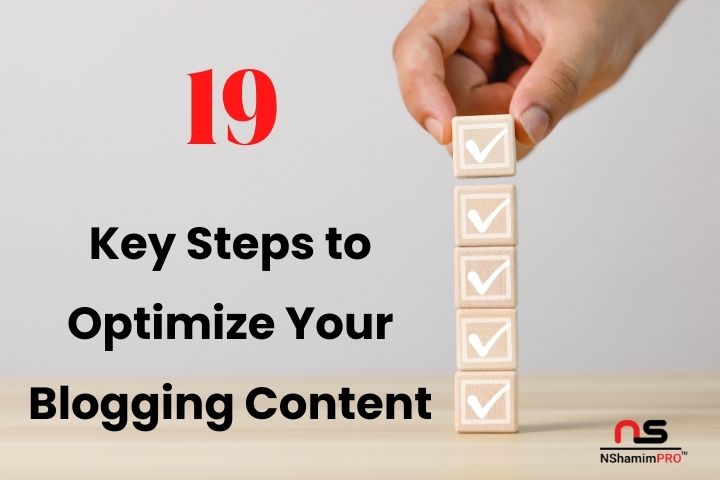This 100 point SEO ranking checklist covers all the essential factors you need to improve your website’s rankings on Google. From optimizing for mobile-friendliness and page speed to building high-quality backlinks and using the right keywords, these factors are crucial for boosting your site’s visibility. Whether you’re focusing on content, technical SEO, or user experience, this checklist ensures you’re covering everything needed to rank higher and drive more traffic to your website. Perfect for anyone looking to enhance their SEO strategy!
| Factor | Details |
|---|---|
| 1. Secure and Accessible Website (HTTPS) | Ensure your site uses HTTPS for security and accessibility. |
| 2. Page Speed | Optimize for fast loading times, especially on mobile devices. |
| 3. Mobile Friendliness | Ensure your website is mobile-friendly and responsive. |
| 4. Domain Age | Older domains tend to have an advantage in rankings. |
| 5. Keyword Optimization | Use targeted keywords naturally throughout your content. |
| 6. Technical SEO | Make sure your site has proper schema markup, robots.txt, and XML sitemap. |
| 7. User Experience (RankBrain) | Focus on user experience signals like click-through rates and bounce rates. |
| 8. Backlinks | Build high-quality, relevant backlinks from authoritative websites. |
| 9. Internal Links | Ensure strong internal linking to help Google understand site structure. |
| 10. Outbound Links | Link to authoritative and relevant external websites. |
| 11. Social Signals | Engage users on social media platforms and drive traffic to your site. |
| 12. Real Business Information | Include contact information, business name, and location for local SEO. |
| 13. Content Depth | Create in-depth, valuable content that answers user queries thoroughly. |
| 14. Optimized Images | Use descriptive alt text for all images and optimize file sizes. |
| 15. Keyword in Title Tag | Include your primary keyword in the title tag for better rankings. |
| 16. Keyword in URL | Use keywords in your URLs, keeping them short and descriptive. |
| 17. Anchor Text | Use relevant and natural anchor text for internal and external links. |
| 18. Domain Authority | Build domain authority through high-quality content and backlinks. |
| 19. Content Freshness | Regularly update content to keep it fresh and relevant. |
| 20. Site Architecture | Ensure clear, organized site structure for better crawling and indexing. |
| 21. Keyword in Meta Description | Use the target keyword in the meta description to increase CTR. |
| 22. Length of Content | Longer, comprehensive content tends to perform better in rankings. |
| 23. Dwell Time | Encourage users to spend more time on your pages by creating engaging content. |
| 24. Schema Markup | Implement structured data to enhance search visibility with rich snippets. |
| 25. Bounce Rate | Lower your bounce rate by improving content relevance and user experience. |
| 26. AMP (Accelerated Mobile Pages) | Enable AMP for faster mobile browsing and better mobile rankings. |
| 27. Content Accuracy | Ensure your content is factually accurate and up-to-date. |
| 28. SSL Certification | Google favors sites with SSL certification for better security. |
| 29. User Search Intent | Align your content with the user’s search intent (informational, transactional, etc.). |
| 30. Click-Through Rate (CTR) | Optimize title tags and meta descriptions to improve CTR. |
| 31. Keyword in H1 Tag | Use the primary keyword in the H1 tag for improved relevance. |
| 32. Multimedia Elements | Include videos, infographics, and images to enhance content engagement. |
| 33. Social Sharing Buttons | Add social sharing buttons to encourage content sharing. |
| 34. Optimized Meta Tags | Ensure that each page has unique and optimized title tags and meta descriptions. |
| 35. Backlink Diversity | Get backlinks from a variety of domains to show natural link-building efforts. |
| 36. User Reviews | Positive user reviews can enhance your credibility and local SEO. |
| 37. Local Citations | Ensure your business information is consistent across local directories. |
| 38. Mobile Usability | Use Google’s Mobile Usability tool to fix mobile issues. |
| 39. Use of LSI Keywords | Implement Latent Semantic Indexing (LSI) keywords to provide context to your content. |
| 40. Bounce Rate Reduction | Focus on reducing bounce rates by improving site design and relevance. |
| 41. Optimize for Voice Search | Use natural language and long-tail keywords to rank for voice search queries. |
| 42. Robust XML Sitemap | Submit an XML sitemap to help search engines crawl your site more efficiently. |
| 43. HTML Improvements | Use Google Search Console to identify and fix HTML improvements. |
| 44. Keyword in First 100 Words | Include your primary keyword within the first 100 words of your content. |
| 45. Google My Business | Set up and optimize your Google My Business profile for local SEO. |
| 46. Linking Out to Authority Sites | Link to reputable sources to provide additional value and trust. |
| 47. Use of Canonical Tags | Prevent duplicate content issues by using canonical tags correctly. |
| 48. Anchor Text Variety | Use varied anchor texts for internal and external links to avoid over-optimization. |
| 49. Content Readability | Write content that is easy to read and understand, using short sentences and paragraphs. |
| 50. Engaging Headline | Craft compelling headlines to improve user engagement and CTR. |
| 51. Local Keyword Optimization | Optimize for local keywords to target region-specific search traffic. |
| 52. Server Location | Hosting your website on a server near your target audience can improve load times. |
| 53. No Intrusive Pop-ups | Avoid using intrusive pop-ups that can negatively affect user experience and rankings. |
| 54. Google Analytics | Use Google Analytics to track user behavior and improve SEO strategies. |
| 55. Thin Content Removal | Remove or improve thin content that adds little value to the user. |
| 56. Consistent NAP Information | Ensure your Name, Address, and Phone (NAP) are consistent across your website and local listings. |
| 57. Outbound Link Quality | Ensure outbound links lead to high-quality, relevant sites. |
| 58. Monitor 404 Errors | Regularly check for and fix 404 errors that negatively impact user experience. |
| 59. Content Uniqueness | Ensure all content is unique and not duplicated across your site. |
| 60. Improve Core Web Vitals | Focus on improving Largest Contentful Paint (LCP), First Input Delay (FID), and Cumulative Layout Shift (CLS). |
| 61. Image Compression | Compress images to improve page speed without losing quality. |
| 62. Target Long-Tail Keywords | Focus on long-tail keywords to capture more specific, less competitive traffic. |
| 63. Use Descriptive URLs | Create short, keyword-rich URLs that describe the page content. |
| 64. Use Breadcrumb Navigation | Implement breadcrumbs to improve site navigation and user experience. |
| 65. Manage Orphan Pages | Ensure every page on your site is linked to avoid orphaned content. |
| 66. Local Schema Markup | Implement local business schema markup to improve local search visibility. |
| 67. Monitor Competitors | Regularly analyze competitors’ strategies for new ranking opportunities. |
| 68. CTR Optimization | Continuously test and optimize title tags and meta descriptions to improve click-through rates. |
| 69. Geo-Targeting | Use geo-targeting for international SEO to optimize for multiple regions. |
| 70. Contextual Backlinks | Focus on getting backlinks from content that is contextually relevant to your niche. |
| 71. NoFollow and DoFollow Links | Maintain a healthy balance between nofollow and dofollow backlinks. |
| 72. Optimize for Featured Snippets | Use structured data and concise answers to rank in featured snippets. |
| 73. User-Friendly 404 Page | Create a custom 404 page to guide users back to relevant content. |
| 74. EAT Signals | Build content and a website that demonstrates Expertise, Authoritativeness, and Trustworthiness (E-A-T). |
| 75. Multilingual SEO | Optimize your website for different languages and countries. |
| 76. Optimize for Google Discover | Create content that is visually engaging and newsworthy to appear in Google Discover. |
| 77. Pillar Content Creation | Build pillar pages that cover a broad topic, with related content linking back to it. |
| 78. Redirect Chains Removal | Fix redirect chains to reduce load time and improve user experience. |
| 79. Content Relevance | Ensure that all content is relevant to your target audience and search intent. |
| 80. Structured Data for Articles | Use structured data to improve article visibility in search results. |
| 81. Optimize Google Image Search | Optimize images for Google Image Search using alt text, file names, and captions. |
| 82. Content Clusters | Create content clusters to organize related content under a main topic (pillar content). |
| 83. Alt Text for Accessibility | Use descriptive alt text to make your site accessible to visually impaired users. |
| 84. Clear Call-to-Action (CTA) | Use strong, clear CTAs to guide user behavior and improve conversions. |
| 85. Optimize for Local Pack | Ensure your business appears in Google’s local pack by optimizing for local SEO. |
| 86. Regular Content Audits | Perform regular audits to update and refresh old content. |
| 87. Monitor Manual Actions | Regularly check Google Search Console for manual actions or penalties. |
| 88. Use CDN | Use a Content Delivery Network (CDN) to improve site speed globally. |
| 89. Email Marketing Integration | Use email marketing to drive traffic to your content and boost engagement. |
| 90. Integrate Web Push Notifications | Use push notifications to re-engage users and bring them back to your site. |
| 91. Video SEO | Optimize video content with proper titles, descriptions, and transcriptions. |
| 92. Keep JavaScript Crawlable | Ensure that JavaScript content can be crawled and indexed by search engines. |
| 93. Regular Website Maintenance | Perform regular maintenance tasks like updating plugins, fixing broken links, and security checks. |
| 94. Optimize for Zero-Click Searches | Create content that answers common queries directly to rank for zero-click searches. |
| 95. Improve URL Structure | Keep URLs clean, short, and descriptive for better SEO. |
| 96. Avoid Keyword Cannibalization | Prevent multiple pages from competing for the same keyword by targeting different topics on each page. |
| 97. Track SEO Metrics | Use tools like Google Analytics and SEMrush to track SEO performance and progress. |
| 98. Prevent Content Duplication | Use canonical tags and avoid creating duplicate content across your site. |
| 99. Fix Broken Links | Regularly identify and fix broken links to improve user experience and SEO. |
| 100. Update Sitemap Regularly | Ensure your sitemap is updated whenever new content is added to your website. |





